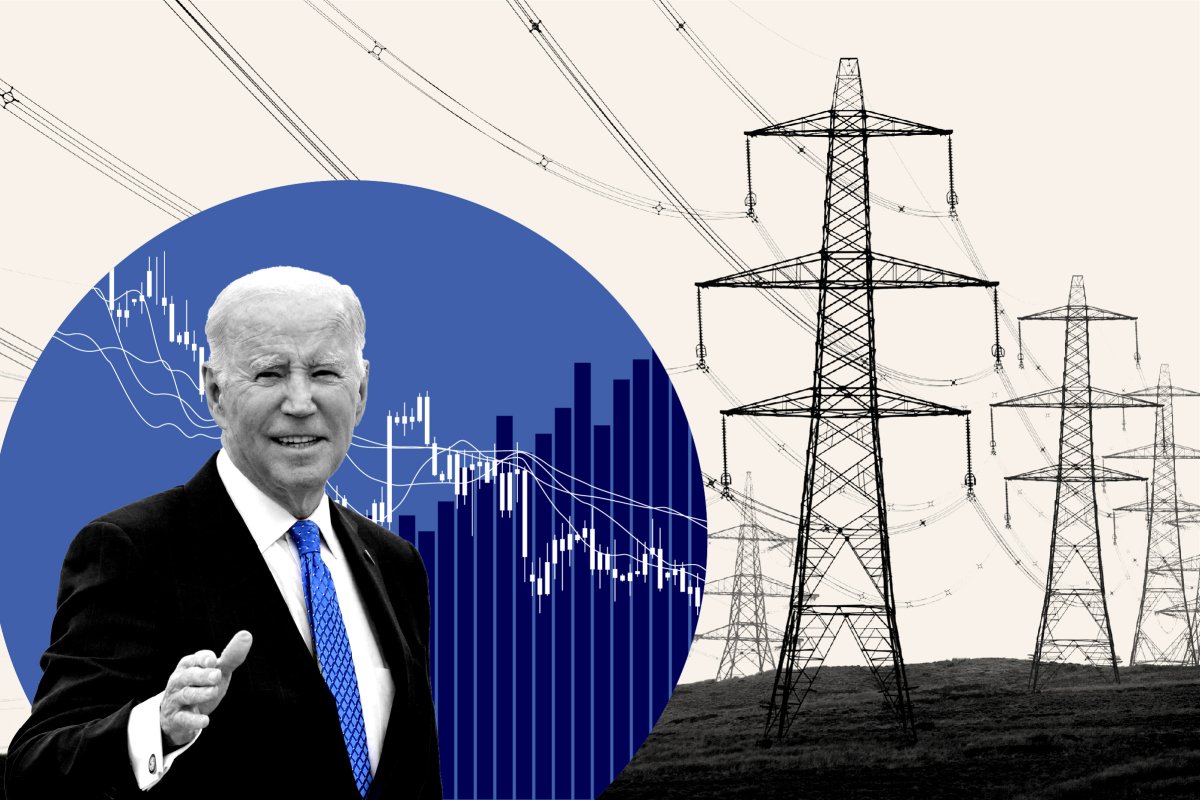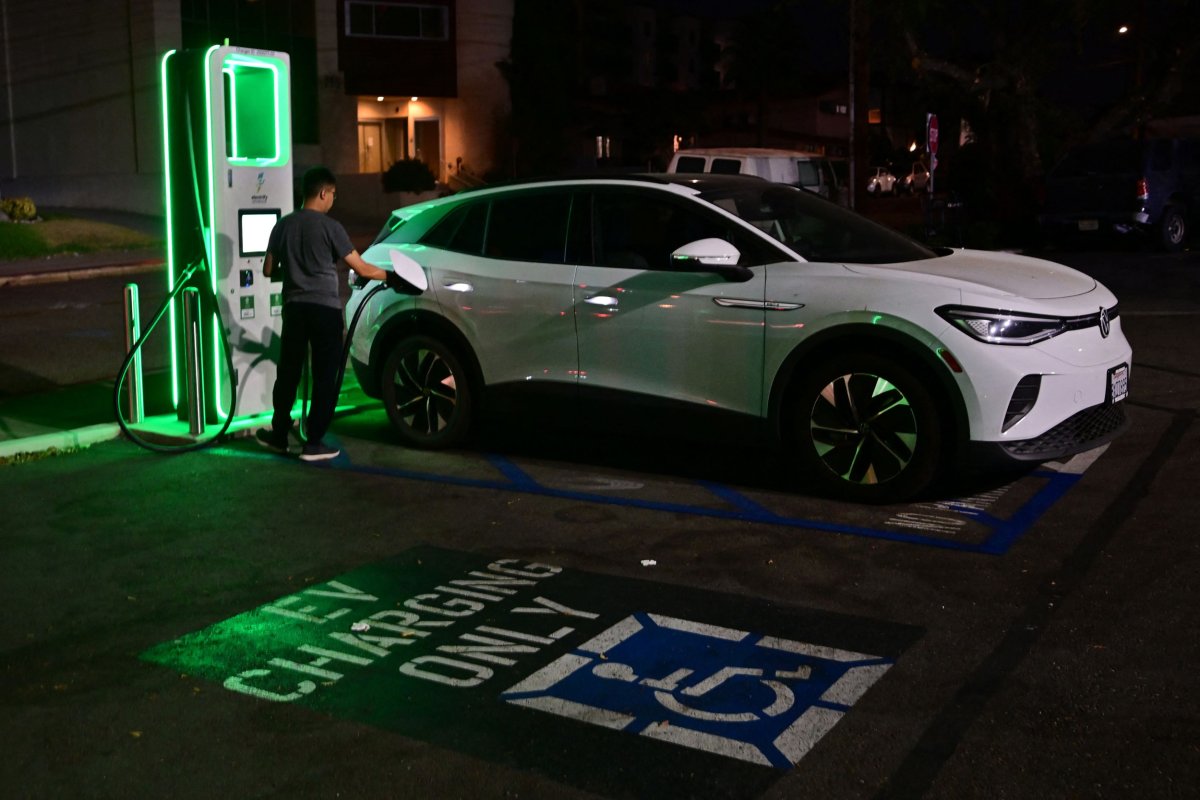- Clean energy projects could satisfy the vast majority of America's energy needs, but many fail waiting to be connected to the grid.
- Industry experts say the main reason is a lack of transmission capacity.
- The way the connection queue operates is also making delays worse.
- As President Joe Biden pushes for a green economy, the problems will only worsen if the grid isn't reformed.
President Joe Biden's drive for a green economy is facing a significant bump in the road, in the form of a massive backlog of projects waiting to be connected to the power grid.
Some 93 percent of all new energy projects vying to be connected to the U.S. power grid are carbon free, and if they were hooked up would account for 80 percent of America's electricity needs by 2030, a 2022 study by Berkeley Lab shows.
But it also found that between 2000 and 2016, 72 percent of connection requests were withdrawn by the applicant, while waiting times for being connected to the grid have grown by 19 months in the past decade to an average of 3.7 years. Just 23 percent of new projects make it through the queue, and "developers and grid operators alike are sounding alarms about backlogs," the study said.
As the Biden administration pushes the transition to a green economy, demand for clean energy is already increasing, as are the number of projects seeking to supply it. But while there is already a surplus on both sides of that equation, stuck in the middle is a power grid that is already struggling to join them together, leaving new energy developments withering on the vine.
Experts say part of the problem is the grid's infrastructure itself, but also the regulations that govern the transmission queue—which prompt developers to flood it with requests in the hope of success, in turn compounding the delays. And the issues with connectivity are only going to get worse as America reaches for its net zero carbon carbon emissions targets.
The Federal Energy Regulatory Commission (FERC) already identified many of these issues in April 2022, and industry figures expect new rules to be announced soon.
Groaning Infrastructure
America's electricity grid is already facing grid stress from increased electricity demand and a growing number of climate change-linked extreme weather events that impact power lines and energy generators. Last summer, California told citizens to conserve energy to prevent strain on its grid, while a cold snap in December led to the temporary closure of oil refineries in the Gulf.
In 2020, U.S. households experienced an average of more than seven hours of power outages, the majority caused by extreme weather events, Energy Information Administration data shows, compared with just over four hours in 2016.

With the Biden administration legislating for a move towards an electrified economy—whether that be through incentivizing the uptake of electric vehicles or homegrown microchip production—America will need additional energy generation. But for that energy to travel from the source to consumer's homes, a transmission system with the capacity to handle current demand as well as take on that additional power is needed.
Rob Gramlich, founder of consultancy Grid Strategies, told Newsweek the "number one reason" for the delays in the interconnection queue—the wait-list for energy projects to be connected to the grid—was limited transmission capacity.
"We have a lot of power demand and a lot of power generation coming on and the grid in between that supply and demand is not keeping up," he said. "You have hundreds of different project developers trying to use whatever capacity there is and they apply for interconnection from the utility—and usually there is a lot more of those applications than either the grid capacity can handle, or the utility can process."
Not only is the problem of infrastructure posing a major roadblock to the transition to a green economy, it is also costing consumers.
Researchers at Princeton University argued in 2021 that for the U.S. to reach its net zero goals, the nation would need to triple its transmission capacity. In the meantime, a March report by Grid Strategies found grid congestion cost $13.4 billion in 2021, which it noted "is ultimately paid by the electricity customers" and "may continue to rise without any intervention."
"Transmission is a big solution to the ills of interconnection," Bryn Baker, senior director of policy innovation at the Clean Energy Buyers Association (CEBA), said. "Because if we're actually building the amount of transmission that we actually need for a reliable, affordable and clean grid—that's going to just grease the wheels of the whole system."
She noted that large energy customers CEBA works with would express an interest in clean energy generation in a particular area and sometimes "literally get nothing back from developers, because those developers know in certain parts of the country the grid is so congested."
Alice Madden, political director of Greenpeace USA and a former Colorado House Majority Leader, told Newsweek: "I used to be a state legislator, and transmission lines—they can be blocked by a county commissioner. It's a lot easier to lay an oil and gas pipeline than it is to build new transmission lines."
Compounding the Problem
At the same time, new energy projects are evaluated individually through interconnection studies, which determine a project's impact on the grid. This makes sense for single-source, large-scale energy generators such as power plants, but arguably less so for the many smaller clean energy projects being proposed.
Gramlich said the problem of transmission capacity was "compounded by some anachronistic processes that might have made sense when the only thing people were building was gas generation—which was the case 20 years ago when these rules were put in place—but they don't make any sense for the current fleet of generation."
As clean energy projects tend to congregate in certain areas, he suggested an "optimal system" would have a large, shared transmission line out to those areas that individual projects can link up to.
"We are unfortunately attempting to plan the transmission system through the connection process, which doesn't make sense," Gramlich said. "What we need to move towards is proactively planning the right system, taking into account where the future generation is likely to be, build the right kind of grid based on that future generation and demand, and then the interconnection process can be quicker and cheaper."

FERC has argued in favor of transmission providers identifying geographic zones "that have the potential for the development of large amounts of new generation, particularly renewable resources," and noted that several had already implemented such policies.
Both Baker and Gramlich agreed that the delays in the interconnection queue were being worsened by developers putting in multiple requests for projects in different areas in the hope one makes it through, but offered differing explanations as to why.
Gramlich said that because developers have "no information" about the needs of the grid, they will submit several requests "in the hope one of them pans out and gets a quick and cheap interconnection approval."
But, he added, "that dynamic and that incentive for project developers to do that itself compounds the problem."
FERC noted that interaction between developers and transmission providers appeared "limited" and proposed long-term planning that includes "transparent and not unduly discriminatory selection criteria that are used to evaluate transmission facilities (or portfolios of transmission facilities)."
Baker pointed to what is known in the industry as a "first come, first serve interconnection study queue."
She said: "Because of that, everybody's sort of throwing everything at the wall because they don't know when they're number's going to get called up in the queue.
"Those inefficiencies are compounded by exploratory connection requests that are based on developers attempting to obtain locations with available transmission capacity."
Instead, she said a reform proposal "widely being talked about" in the industry was moving to a "first ready, first served" system—a policy being considered by FERC chair Willie Phillips.
One solution may be for developers with proposed projects close to one another to be able to submit a joint interconnection request.
But, Baker suggested, even this would require further reform of the way interconnection studies are handled. If enough proposals are made for a particular area to warrant a larger study, she said, "it's that single next project that sort of drew the short straw, that has to pay for that entire study—which then sinks that project."
FERC noted that project developers had cited "high interconnection-related network upgrade costs as the primary reason for their withdrawal." Where the same network upgraders were being "repeatedly" identified as projects withdrew from the queue, the next-in-line project was left with the same problems.
The withdrawal of proposals can itself have an impact on other energy projects.
"That triggers reassessments and possible restudies by transmission providers, that increases the timing and the cost—and you've basically gotten yourself stuck in this loop of uncertainty, cost and delay," Baker said.
Instead of evaluating projects in isolation, FERC is entertaining the possibility of cluster studies that look at the feasibility of a group of projects. Baker said this would weed out "speculative" projects by "applying more stringent financial commitments and readiness requirements."
Pressure for Reform
According to the Berkeley Lab study, the total potential energy capacity in the interconnection queue at the end of 2021 was 1.4 terawatts—more than the 1.2-terawatt capacity the U.S. currently has—representing more than $2 trillion in potential investment. Baker said the queue had since risen to a "staggering" 2 terawatts.
Part of the pressure comes from the market, which is increasingly looking for clean energy, but also Biden's flagship Inflation Reduction Act, which among its policies provided investment and incentives in clean energy projects.
The IRA designated around $2.9 billion for transmission expansion projects—but research by Princeton suggested investment in transmission would likely need to be more than $50 billion by 2030.
"There really wasn't much support or policy change for transmission, so we're still stuck here," Gramlich said. "A lot of people thought before [that] the grid was the major barrier for accommodating load and generation—but that's 10 times more true now."

"Think about it like water flowing through a hose and you hit a kink—that pressure building up behind the kink of interconnection reform and lack of transmission," Baker said. "As more and more interest and demand continues to grow in clean energy, the pressure is going to build to do reform—and one of those big areas is on the need for transmission writ large."
In his written comments on the proposals, Phillips noted the "significant backlogs" in the interconnection queue, and said that while FERC's proposed reforms "may help mitigate these issues in the long term, they are not enough to alleviate existing backlogs in the near term."
Phillips stressed at the time that the suggested rule changes were "merely a proposal," and while the industry is crying out for reform, as the commentary it provided in that proposal shows, providers differ in their readiness to accept these new policies.
Newsweek approached the North American Electric Reliability Corporation, a regulatory authority that oversees the continent's grid operators, via email for comment on Wednesday.
When asked to comment, an FERC spokesperson noted Phillips "has said several times since becoming chairman in January that the transmission proposals are priorities," but did not say when the new rules were expected to be announced.
Uncommon Knowledge
Newsweek is committed to challenging conventional wisdom and finding connections in the search for common ground.
Newsweek is committed to challenging conventional wisdom and finding connections in the search for common ground.
About the writer
Aleks Phillips is a Newsweek U.S. News Reporter based in London. His focus is on U.S. politics and the environment. ... Read more
To read how Newsweek uses AI as a newsroom tool, Click here.








